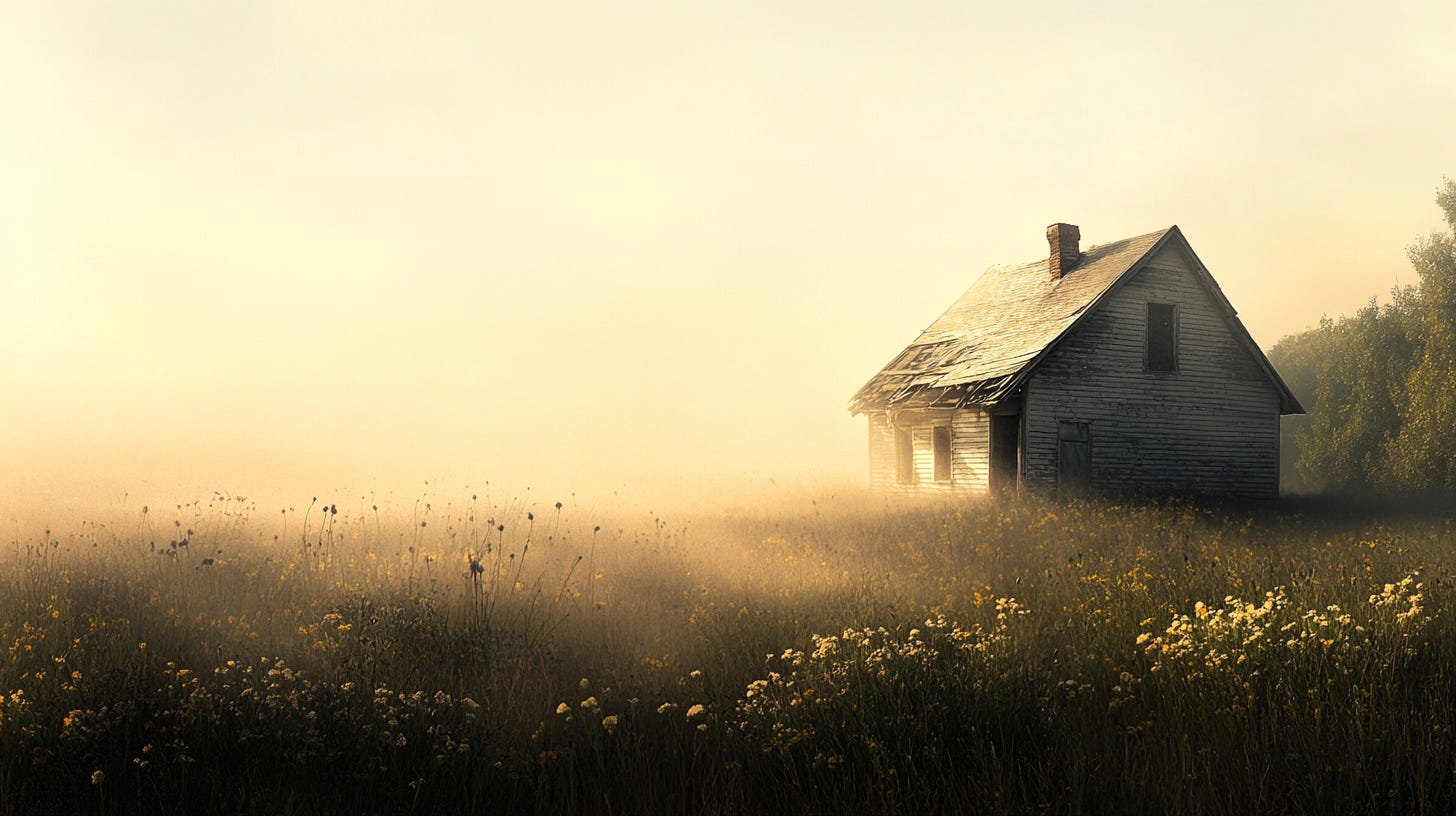A meditation on illusion, effort, and the quiet kind of freedom that comes with seeing clearly.
Some mornings, the fog doesn’t roll in—it just lingers. Thick and unmoving, as if the air itself is unsure. You tell yourself it will clear. That if you wait long enough, the outlines will return—the road, the path, the shape of things. But sometimes, the waiting becomes the weather. You stop looking for landmarks. You start calling the haze clarity.
I lived like that longer than I care to admit—navigating by instinct, by memory, by hope. I told myself I knew the terrain.
I told myself things were safe… that I was safe.
And then, quietly, the fog lifted. Not with drama—no gust of wind, no rupture of skies. Just a slow unspooling of light.
And what I saw wasn’t what I thought I’d been holding onto.
The house I thought I’d built—no, believed I’d built—was uneven. The ground beneath it soft. What I’d called shelter was something I’d been holding up with my own hands—quietly, constantly—until even the exhaustion felt like virtue.
It’s strange how much effort goes into sustaining something you want so badly to believe in. Not because it demands it outright, but because hope has its own gravity. You patch the leaks. Fix the roof. Dim the lights. Pretend the walls are whole.
You call it love. Or resilience. Or faith—anything but what it truly is.
But when the fog lifts, you see the scaffolding. You see the weight you’ve been carrying in the name of care. And once you see it, you can’t unsee it.
You can grieve it.
You can mourn the version of the story you were telling yourself.
You can even feel tenderness for that version of you that had been lost in the haze—the one who thought loving hard enough would make the shape of things align. Who didn’t yet know that clarity sometimes arrives disguised as loss.
But you can’t unknow what the light shows.
Letting go doesn’t feel like strength. It feels like stillness. Like standing in a room you once worked so hard to hold together and realizing it no longer asks anything of you.
There’s no clean line between clarity and grief. No ceremony to it. No applause. Just the absence of ache.
Sometimes it looks like leaving a message unanswered.
Sometimes it sounds like your own voice saying, gently, not this time.
And it might feel like failure at first—because we’ve been taught that endurance is love, that staying is noble, that leaving means we’ve given up.
But there is a kind of leaving that is sacred.
There is a kind of release that makes room for return—not to someone else, but to yourself.
And returning to yourself isn’t dramatic. It’s quiet. Gradual. Sometimes it sounds like your own breath, uninterrupted. Or the stillness of a morning where you no longer brace for disappointment. Boundaries aren’t walls—they’re doorways. Back to clarity. Back to breath. Back to peace.
The fog doesn’t always clear all at once. Sometimes it thins in patches, revealing only what you’re ready to see. And sometimes, even when it’s gone, you miss it. Miss the softness it offered. The excuse it gave not to decide. The comfort of not knowing too much.
But clarity doesn’t ask for perfection.
It only asks that you look.
And when you do—when you truly see the shape of what you’ve been carrying—you have a choice.
To set it down.
To step back.
To stop calling it shelter, when it was only ever scaffolding.
I wonder how long I mistook holding my breath for holding on.
And how it feels, now, to finally let go.



The metaphor 'When the Fog Lifts' really spoke to me. I connected with your exploration of how clarity can finally arrive after a time of feeling confused or stuck. Focusing on that shift, that moment when things start to make sense again, felt like a really thoughtful and relatable reflection 🙂